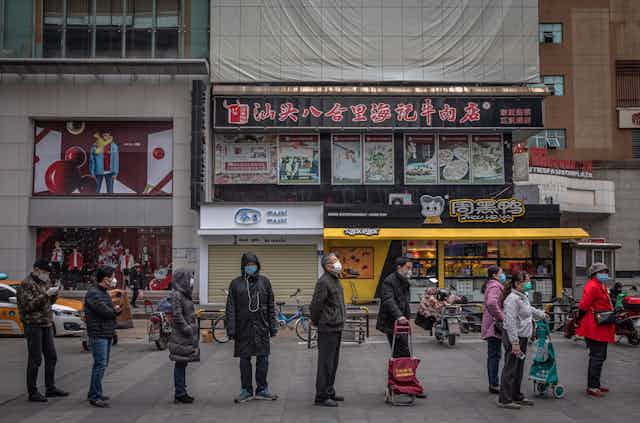After reducing its number of new locally acquired COVID-19 cases to zero, China must help other affected countries recover economically. This is the only way it can ensure its own economic recovery.
Over 40 economists, based both in and outside mainland China, have forecast China’ economic growth to fall to an average of 3.5% this quarter from 6.0% in the fourth quarter of 2019 – a full percentage point lower than predicted in a February 14 poll – due to the COVID-19 pandemic.
Despite this gloomy prediction, analysts previously predicted China’s economy will bounce back, following the resumption of work in factories and companies that shut due to the outbreak.
However, we should not forget that China, the world’s largest exporter, needs the rest of the world for its own economic recovery.
There are at least two reasons China depends on the global economy for its own recovery: China’s large amount of exports to other countries and the continuity of its Belt and Road Initiative (BRI) – China’s massive infrastructure projects, many of which are located in countries affected by COVID-19.
To ensure its economic recovery, China should assist countries involved in (BRI) initiative and improve its relationship with its biggest export destination, the United States.
China’s high exports
China’s export activities are significant for its economy, accounting for almost one-fifth of its GDP.
The latest data from Trade Map show China’s exports of goods account for 12.4% of the total global goods imports in 2018, or worth about US$2.49 trillion.
The US is China’s number one export destination, accounting for 20% of China’s exports, followed by Hong Kong (12%), Japan (6%), South Korea (4.5%) and Vietnam (3.4%).
As the world heads towards a recession – that according to IMF Managing Director, Kristalina Georgieva would be at least as bad as the 2008 global financial crisis where global GDP growth was at minus 1.6%, the lowest since the 1930 Great Depression – demand for exports from China’s trading partners have dropped.
In the US the virus is causing a deep decline in spending. These spending cuts are expected to hurt its export demands as well.
To recover its economy, China must also see the economies of its export destination countries improve – especially its top five export destinations: the US, Hong Kong, Japan, South Korea and Vietnam.

The BRI must go on
China also needs to ensure continued implementation of the BRI, especially in countries along the BRI routes hit by the COVID-19 pandemic, to save its economy.
The BRI is China’s most crucial economic initiative, accounting for 17% of its exports.
Since the outbreak of SARS-CoV-2, the virus that causes COVID-19, many countries have delayed the implementation of BRI projects as they focus on containing the spread of the virus in their regions.
The projects stopped in some host countries because Chinese engineers and workers have not been allowed to re-enter.
In Italy, BRI projects were put on hold after the country’s first case of COVID-19.
In Indonesia, the construction of a high-speed railway linking Jakarta and Bandung in West Java, and the building of a dam in the Batang Toru rainforest, North Sumatra have been suspended. A ban on flights from China prevented Chinese workers from returning to the construction sites.
BRI projects play an important role in China’s economy as the BRI countries are not only China’s trading partners, but also its gateways to regional markets.
BRI projects in Italy give China access to European markets. In 2018, Italy imported 6% of its goods from China, equivalent to around US$33 billion that year. Italy has been a crucial destination for Chinese investments, particularly in the fashion industry.
China has also been initiating major BRI infrastructure projects in Southeast Asia due to ASEAN nations being China’s second top export destination.
Indonesia is one of the key countries for BRI projects in Southeast Asia.
But Southeast Asian countries are struggling to deal with the COVID-19 pandemic, which means China’s BRI projects are also at risk, harming its economy.
The way forward
One thing China can do to speed up its economic recovery is to prioritise assistance to BRI countries.
China can send its medical personnel and kits to these countries. China has already sent medical supplies to countries in South and Southeast Asia. But it should also consider expanding its assistance to other BRI regions.
China can also share what its learnt on containing the spread of the virus with the BRI countries.
Next, China should fix its relationship with the US, which has been fractured from the ongoing trade war.
Improved China-US relations would not only help both countries recover their economy, but also BRI countries .
China and the US have dominated almost a quarter of the global trade. A robust Beijing-Washington tie will accelerate export activities in other countries. BRI countries, as China’s major exporters, will also benefit from healthy China-US relations.

In his recent phone call with US President Donald Trump, Chinese President Xi Jinping urged Washington to improve ties with Beijing.
Let us hope Trump will consider Xi’s offer.


